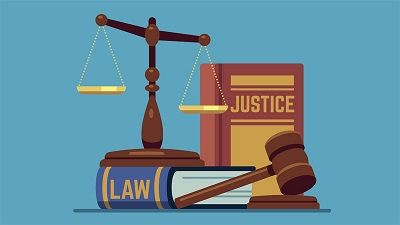Context-
A few weeks ago, a case in Bareilly, Uttar Pradesh, grabbed national headlines: a woman who had filed a rape case was sentenced to imprisonment and fined by the court. This case, covered extensively by some media outlets, painted a picture of a woman who had fabricated rape accusations. This narrative perpetuates the damaging stereotype that false claims by women are common. However, a deeper examination of the trial proceedings reveals numerous systemic shortcomings in the law enforcement machinery.
Overview of the Criminal Justice System in India
|
Lackadaisical Investigation
This case exemplifies a lackadaisical police investigation and a prosecution that did not attempt to construct a viable case. At the time of filing the charge sheet, there was no substantial evidence against the accused.
Judicial Oversight and Prosecution Failures
Multiple stakeholders overlooked the weaknesses in this case. Section 173(8) of the CrPC allows a magistrate to direct further investigation in case of a flawed investigation. However, in this case, the magistrate committed the case to trial despite glaring gaps. The magistrate could have called for the case diary under Section 172(2) of the CrPC, which might have revealed investigative discrepancies. The public prosecutor’s endorsement of a weak charge sheet shows a lax attitude and a failure to fulfill their duty to the court and the public.
Focus on Undertrial Detention
Arbitrary and prolonged undertrial detention is pervasive within India’s criminal justice system. In this case, Accused underwent over four years of incarceration, yet there was no accountability for the investigating officers or the prosecution. The absence of repercussions for those responsible for wrongful detention perpetuates a culture of impunity and undermines public confidence in the judicial process.
Issues of Bail in India
This case also highlights the issue of bail in India. Accused’s bail application was rejected in 2021 due to the serious nature of the offence. His family lacked the means to file an appeal, resulting in his prolonged detention until acquittal. Despite Supreme Court directives to decongest prisons during the pandemic, accused was not granted bail. The reality in trial courts, marked by indifference and poverty, prolongs undertrial detention despite policy and constitutional court discourse advocating for its reduction.
The State of Fast-Track Courts
The functioning of fast-track courts has been far from ideal. New courts with necessary infrastructure and dedicated judges are not set up for fast-track purposes. Instead, existing courts are designated as fast-track courts, requiring judges to manage regular caseloads alongside expedited cases. Without addressing these systemic challenges, the centrally sponsored scheme for Fast Track Special Courts (FTSC) has been extended until 2026, with a budgetary allocation of around ₹2,000 crore.
|
Other Issues in the Current Criminal Justice System of India
|
Need reform in the Indian Criminal Justice System
Capacity Building
To strengthen India's Criminal Justice System, significant investments in training, recruitment, and infrastructure are essential.
Technological Advancement
Regular training for investigating officers and prosecutors in technological tools, along with well-equipped forensic laboratories, can improve detection rates, investigation quality, and conviction rates. Key technological advancements include:
- Digitized Evidence Collection: Implementing digital methods for evidence collection to streamline processes.
- Online Proceedings and Video-Recorded Statements: Facilitating quicker trials and reducing backlog through online court proceedings and video-recorded statements.
- e-Courts Project: This initiative aims to computerize the workings of Indian courts, enhancing judicial efficiency.
- Supreme Court Vidhik Anuvaad Software (SUVAS): An AI-enabled translation tool for converting orders and judgments into vernacular languages.
- Supreme Court Portal for Assistance in Court’s Efficiency (SUPACE): An AI research assistant tool designed to improve judicial efficiency.
Immediate Actions
Reducing long delays in the judicial process requires immediate action. State and central governments must invest in judicial infrastructure to ensure speedy trials, which will enhance public respect for the law.
Safeguards for Human Rights
Explicit incorporation of human rights principles and safeguards into the legal framework is needed. Clearly defined terms and narrowed down legal language can prevent potential misuse and protect individuals' rights.
Restorative Justice
Embrace restorative justice principles that focus on reconciliation, restitution, and rehabilitation to address the root causes of crime, reduce recidivism, and provide closure to victims.
Create Public Awareness
Public awareness campaigns are crucial to educate citizens about their rights and responsibilities within the criminal justice system. Improved police-public relations can be achieved through such initiatives, fostering greater trust and cooperation between law enforcement and the community.
Conclusion
The Bareilly case, often cited to bolster the stereotype of women lodging false accusations, underscores a critical need for reforms within the criminal justice system. Rather than weakening laws safeguarding women, this case highlights the necessity for improvements in police investigation protocols, prosecutorial autonomy, and judicial supervision to mitigate wrongful and prolonged imprisonments. The recently passed three pivotal Bills: Bharatiya Nyaya (Second) Sanhita, 2023; Bharatiya Nagarik Suraksha (Second) Sanhita, 2023; and Bharatiya Sakshya (Second) Bill, 2023 to overhaul the criminal justice system is the right step in this direction.
|
Probable Questions for UPSC Mains Exam-
|
Source- The Hindu







